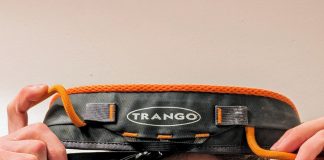The 2012/2013 season brought in $3.4B in retail revenues, up 3 percent compared with dollars sold during the previous season, according to new figures from SIA. By category, dollar sales in accessories increased 6 percent, apparel was up 3 percent and equipment sales were flat compared to the 2011/2012 season.
Retailers struggled during the first half of the 2012/2013, but when snow began to fall in late December, sales picked up, said SIA. Sales in January, February and March beat the four season average in every category.
Although sales in most categories exceeded last season’s sales, inventories, particularly equipment inventories, remained inflated through March 2013. This overstock most likely will depress pre-season wholesale orders in most hard goods categories and result in fewer in-season choices for consumers during the first half of the 2013/2014 season.
Specialty shops sold through $1.9B in snow sports equipment, apparel and accessories and continue to be the widest distribution channel in the snow sports market. Sales in specialty shops finished the season about 1.5 percent higher this season compared to the 2011/2012 season. The Internet is the second widest sales channel; consumers spent $810M online for snow sports gear this season, about $77M more than they did last season. Chain store sales reached $746M and finished about even with last season’s sales. More than half (55 percent) of the dollar sales in chain are for apparel, 37 percent are for accessories like hats and gloves, and just 8% percent of dollars sold in chain were spent on equipment like skis and boards.
Through all distribution channels, snow sports equipment sales are down slightly in units sold and even with sales in 2011/2012 in dollars sold to $841M. Alpine ski equipment brought in more than 60 percent of all equipment dollars and finished with sales up 2.6 percent in dollars, including sales of carryover alpine ski equipment. Snowboard equipment sales brought in $255M through February, ending the season down 7 percent compared to sales in the same time frame last season. Cross-country ski equipment sales increased 6 percent to $35M as the snow fell. The small but high growth category this season is Alpine Touring (AT) with a 22 percent increase in dollars sold to $18M.
Snow sports apparel continues to have the most dollar share at snow sports retail, bringing in $1.46B this season. Apparel sales are up 3 percent in dollars sold and up 3 percent in units sold led by a 4 percent increase in unit sales of insulated tops. Sales of snowboard bottoms are up 10 percent in units sold and alpine bottoms sales are up just under 1 percent in units sold.
Sales of accessories increased 6 percent in dollars sold to $1.1B this season. Accessories tend to be items that consumers need on mountain and on trail; hats, gloves, base layer, goggles and camera equipment all enjoyed increased sales this season.
Other 2012/2013 trends SIA spotted include:
- Sales of alpine/AT boots, alpine boots with a walk mode and rubber/Vibram sole designed for use with alpine touring bindings have more than doubled compared to last season. This season, more than 77,000 alpine/AT boots were sold compared to 29,000 last season.
- Sales of lighter, more technical AT/Randonee boots are up 43 percent in units to about 13,000 units and up 60 percent in dollars sold to $6.8M.
- Sales of skins, used on the bottoms of skis to prevent backwards sliding when traversing or sliding uphill are up 10 percent in units sold to 26,000 and up 10 percent in dollars sold to $3.6M.
- Splitboard sales, although still a small category with 3,700 units sold this season, are up 6 percent in units sold and up 1 percent in dollars sold.
- Action camera sales are soaring, up 50 percent in units to 123,000, and up 49 percent in dollars sold to $43M
Market inertia from the dismal 2011/2012 season and a late start to snowfall this season depressed sales in November and December but the market began to turn in late December as snow began to fall. The snow continued to fall through the end of the season and late season participation and sales were strong. The momentum in sales and participation at the end of the 2012/2013 season should translate into optimistic consumers more willing to spend in the first half of the 2013/2014 season.







